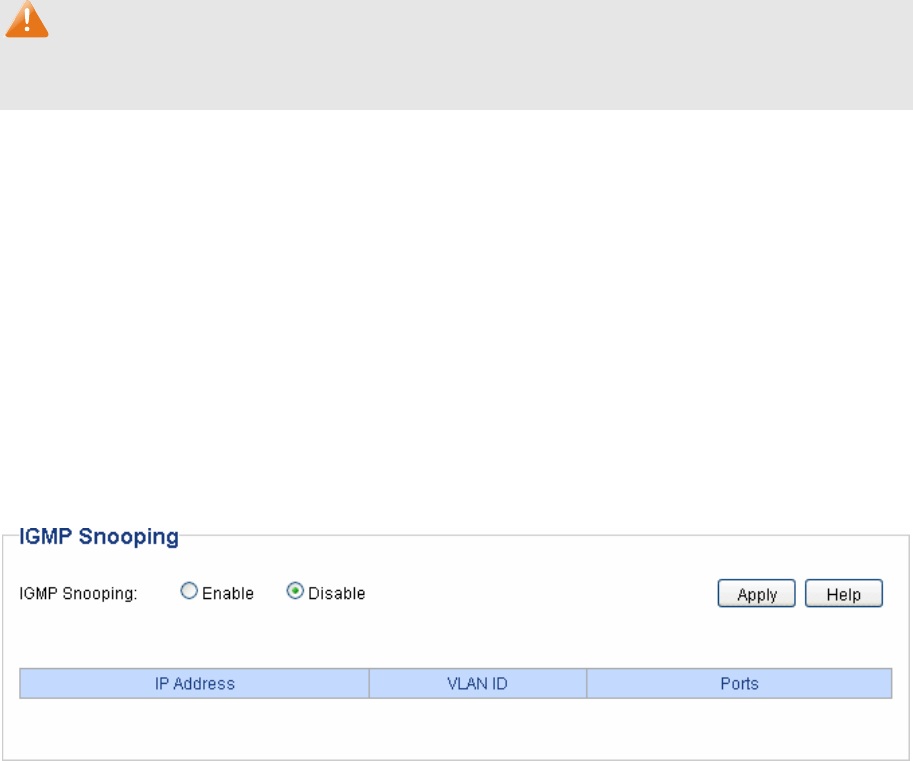
Note:
The switch cannot be managed through the disabled port. Please enable the port which is used to
manage the switch.
4.4.2 IGMP Snooping
Internet Group Management Protocol (IGMP) snooping is a multicast control mechanism, which
can be used on the switch for dynamic registration of the multicast group.
IGMP Snooping allows the switch to recognize the IGMP messages transmitted between network
stations or devices and an IGMP host. When receiving IGMP report message from the IGMP host,
the switch will add the port to the multicast address table; when listening to IGMP leave message
from the IGMP host, the switch will remove the port from the multicast address table. By managing
and controlling the multicast address table, the broadcasting of multicast traffic can be effectively
prevented in the network.
On this page you can enable IGMP snooping feature and view the current IGMP Group
information.
Choose the menu System→Switching→IGMP Snooping to load the following page.
Figure 4-5 IGMP Snooping
The following entries are displayed on this screen:
IGMP Snooping
IGMP Snooping: Enable or disable IGMP snooping function globally on the switch.
IP Address: Displays the multicast IP address.
VLAN ID: Displays the VLAN ID of the multicast group. If the packet does
not carry VLAN ID, then here displays the PVID of the port. All port
members of a multicast group should be divided to the same
VLAN, and have the same PVID.
Ports: Displays the forwarding port list of the multicast group.
4.4.3 Port Trunk
Port trunk is used to combine a number of ports together to make a single high-bandwidth data
path, which can highly extend the bandwidth. The bandwidth of the trunk is the sum of bandwidth
of its member ports.
There are some rules on using trunk:
For the member ports in a trunk group, their configuration of Port setting (Speed and Duplex,
Flow Control), QoS must be the same.
12


















